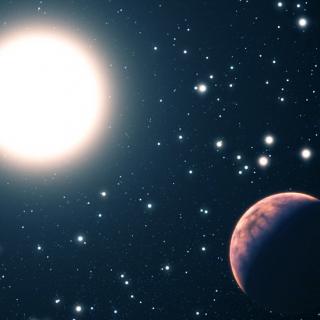Bibcode
Wright, Jason T.; Roy, Arpita; Mahadevan, Suvrath; Wang, Sharon X.; Ford, Eric B.; Payne, Matt; Lee, Brian L.; Wang, Ji; Crepp, Justin R.; Gaudi, B. Scott; Eastman, Jason; Pepper, Joshua; Ge, Jian; Fleming, Scott W.; Ghezzi, Luan; González-Hernández, J. I.; Cargile, Phillip; Stassun, Keivan G.; Wisniewski, John; Dutra-Ferreira, Leticia; Porto de Mello, Gustavo F.; Maia, Márcio A. G.; Nicolaci da Costa, Luiz; Ogando, Ricardo L. C.; Santiago, Basilio X.; Schneider, Donald P.; Hearty, Fred R.
Referencia bibliográfica
The Astrophysical Journal, Volume 770, Issue 2, article id. 119, 21 pp. (2013).
Fecha de publicación:
6
2013
Revista
Número de citas
29
Número de citas referidas
25
Descripción
We have analyzed new and previously published radial velocity (RV)
observations of MARVELS-1, known to have an ostensibly substellar
companion in a ~6 day orbit. We find significant (~100 m
s–1) residuals to the best-fit model for the companion,
and these residuals are naïvely consistent with an interior giant
planet with a P = 1.965 days in a nearly perfect 3:1 period
commensurability (|Pb /Pc – 3| <
10–4). We have performed several tests for the reality
of such a companion, including a dynamical analysis, a search for
photometric variability, and a hunt for contaminating stellar spectra.
We find many reasons to be critical of a planetary interpretation,
including the fact that most of the three-body dynamical solutions are
unstable. We find no evidence for transits, and no evidence of stellar
photometric variability. We have discovered two apparent companions to
MARVELS-1 with adaptive optics imaging at Keck; both are M dwarfs, one
is likely bound, and the other is likely a foreground object. We explore
false-alarm scenarios inspired by various curiosities in the data.
Ultimately, a line profile and bisector analysis lead us to conclude
that the ~100 m s–1 residuals are an artifact of
spectral contamination from a stellar companion contributing ~15%-30% of
the optical light in the system. We conclude that origin of this
contamination is the previously detected RV companion to MARVELS-1,
which is not, as previously reported, a brown dwarf, but in fact a G
dwarf in a face-on orbit.
Proyectos relacionados

Pruebas Observacionales de los Procesos de Nucleosíntesis en el Universo
Recientemente se han llevado a cabo varios análisis espectroscópicos de estrellas con planetas. Uno de los resultados más relevantes ha sido descubrir que las estrellas con planetas son en promedio más metálicas que las estrellas del mismo tipo espectral sin planetas conocidos (Santos, Israelian & Mayor 2001, A&A, 373, 1019; 2004, A&A, 415, 1153)
Garik
Israelian